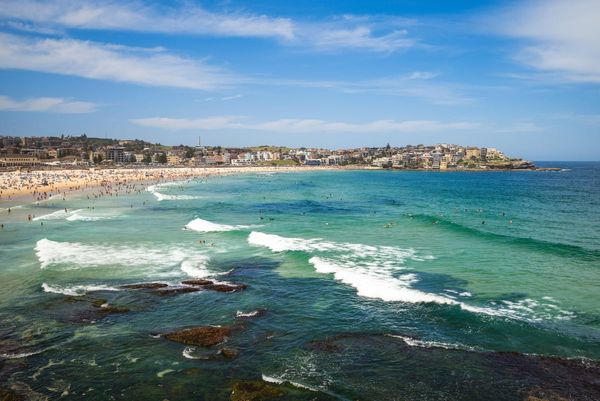
Talking to dairy farmers after the co-op announced new on-farm emissions targets at its AGM in Methven, Rod Oram describes the fear that climate action triggers for many
Analysis: Fonterra and its farmer-shareholders made an historic commitment yesterday. One that will reap great rewards for them and the nation, if they fulfil the tremendous opportunities it offers them.
But you would never have guessed so from the low-keyed way management and board announced the commitment at the co-op’s AGM in Methven yesterday, and the failure of shareholders present to offer views on it, for or against.
Indeed, of the co-op’s 11,000 plus farmer-shareholders, only a couple of hundred were there in person in the Mount Hutt Memorial Hall for the AGM, and only 53 online from around the country. Stoicism not celebration pervaded the meeting.
READ MORE: * Fonterra's new goals to cut dairy farm emissions still lag its big customers * Fonterra offers dairy farmers help to meet a new emissions intensity target
Yet, the co-op and its farmers have finally set themselves goals for reducing climate changing greenhouse gases generated on-farm, as this Newsroom story reported yesterday; and as Fonterra explains here.
Previously, the co-op had only set emission reduction targets for its downstream operations. But those only account for 7 percent of the co-op’s total emissions, with farms generating the other 93 percent.
Fonterra’s low-keyed launch of its climate plan was no surprise, given the widespread questions – or worse, outrage and fear – the subject triggers among many farmers. Getting more on board will take a lot of persuasion and support, John Stevenson, a Wairarapa farmer who chairs the Fonterra Co-operative Council which monitors the performance of management, board and co-op on behalf of farmers, told the meeting.
After years of inconclusive debate and discussion within the co-op and out in industry bodies, it still took the co-op this past year of intensive farmer consultations around the country to shape and decide the climate plan. And next week board and management members begin another extensive national roadshow to try to convince more farmers of the plan’s merits.
The plan has some major weaknesses, not the least of which it’s based on modest cuts in greenhouse gas intensity (that is, fewer emissions per kilogram of milk solids) rather than rapid and absolute reductions (which are needed to forestall the escalating climate crisis).
But Fonterra can sell intensity targets to farmers as a typical business efficiency-drive. That’s an everyday task in farming on all inputs ranging from feed and fertiliser to fuel and wages. Fonterra already rewards farmers who meet a number of environmental, animal, quality, safety and other benchmarks.

The Co-operative Difference Payment is only 10c per kg of milk solids (compared with a farmgate payout of $8.22 per kg in the past season).
But it does incentivise positive changes. Fonterra notes, for example, that many farmers receiving the payment also tend to be lower emission farmers. On average the footprint is 7 percent smaller, which as it happens, is the co-op’s on farm reduction in emissions intensity it hopes to achieve by all farmers adopting best practices. The rest of the reduction will come from other drivers such as new technologies.
That’s also true across many sectors here and around the world. Companies that tackle all their sustainability responsibilities and opportunities - not just their climate ones - are often more innovative, attract more committed employees and customers and out-perform their competitors that don’t
Given the benefits from pursuing best practice, Fonterra says it is confident many farmers will meet over time the new climate goals the co-op has set; and meet them without the incentive / penalty of a price on emissions.
Bigger emission reductions, though, will take a very wide range of programmes with industry and government support and appropriate financial help and incentives to deliver the full range of climate solutions farmers need.
One example Peter McBride, Fonterra’s chairman, mentioned to farmers at the AGM was the co-op’s need to access “decarbonisation capital,” given all major banks are building various degrees of sustainability benchmarks into their lending. Another offered by Miles Hurrell, the co-op’s chief executive, are the sustainability attributes major customers are increasingly demanding.
There are sticks as well. The European Union’s plans to implement Carbon Border Adjustment Mechanisms (tariffs on imports that have a higher carbon footprint than European goods) is one to which McBride alerted shareholders.
But all of the above is just a modest start for Fonterra and its farmers. They must now figure out how to very rapidly intensify, scale up and accelerate their climate ambitions and actions. To do so, they must work closely with all their stakeholders including customers, communities and government.
And to do all that, they need to be inspired by, and lock on to, the fast-developing revolutions in farming and food. Over the next few decades, those will transform the sectors from two of the main causes of our global crises in climate and nature into two of the best solutions.
All New Zealanders would support our farmers in those bold and essential endeavours, as they have with past challenges farmers have faced.
Built in 1956, the Mount Hutt Memorial Hall is an enduring expression of an earlier era of rural and national optimism. To mark the hall’s 75th anniversary in 2031, Fonterra should hold its 2031 AGM there to celebrate farmers’ huge achievements of high profitability, true sustainability and climate computability.
That’s just eight years away. But that’s the speed and sureness we all need to achieve as we rise to the opportunities and meet the challenges of the climate crisis.







